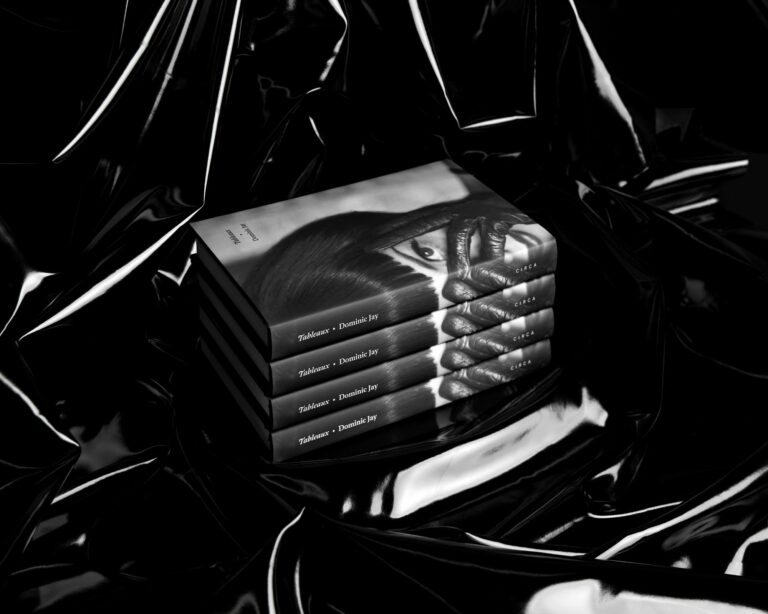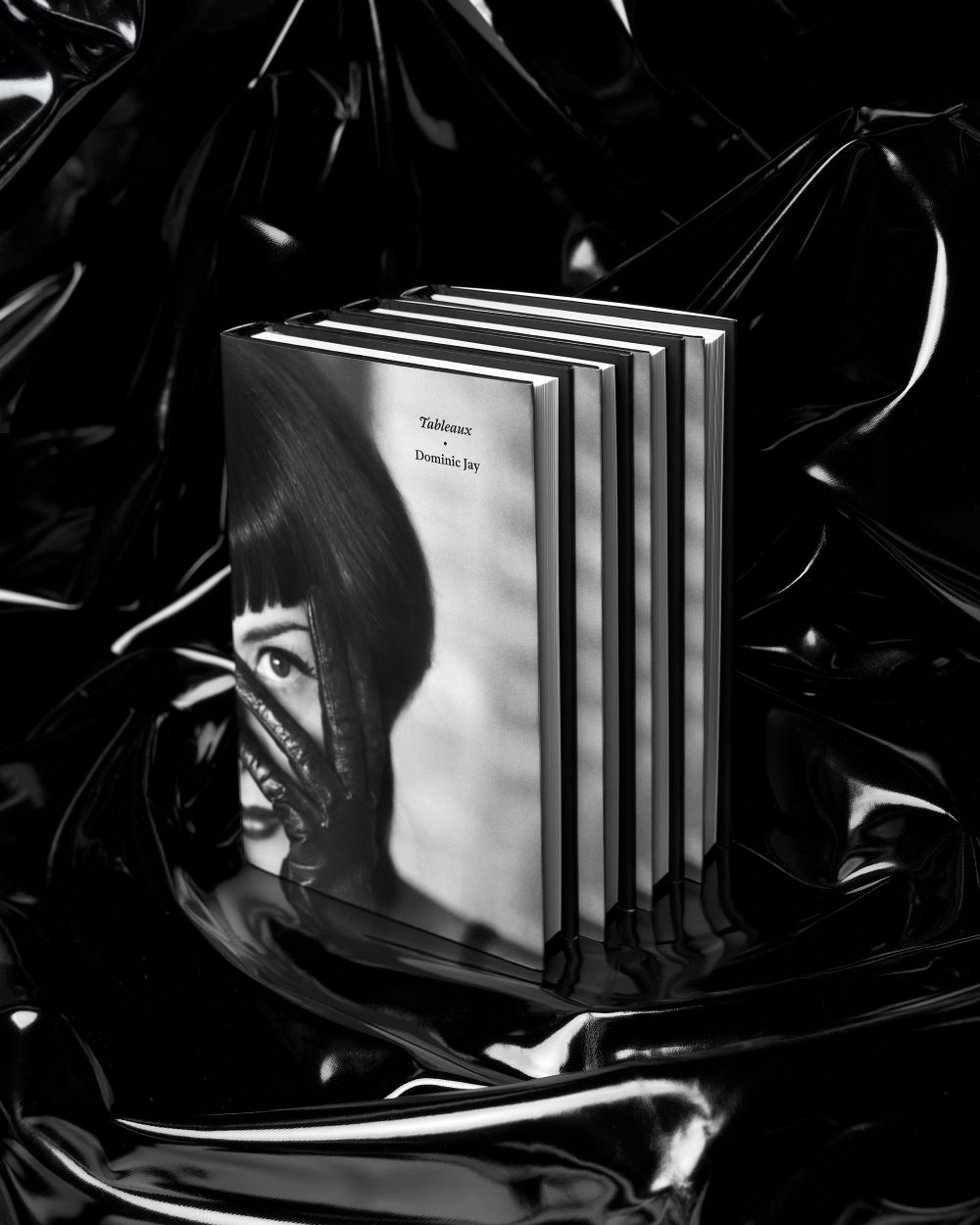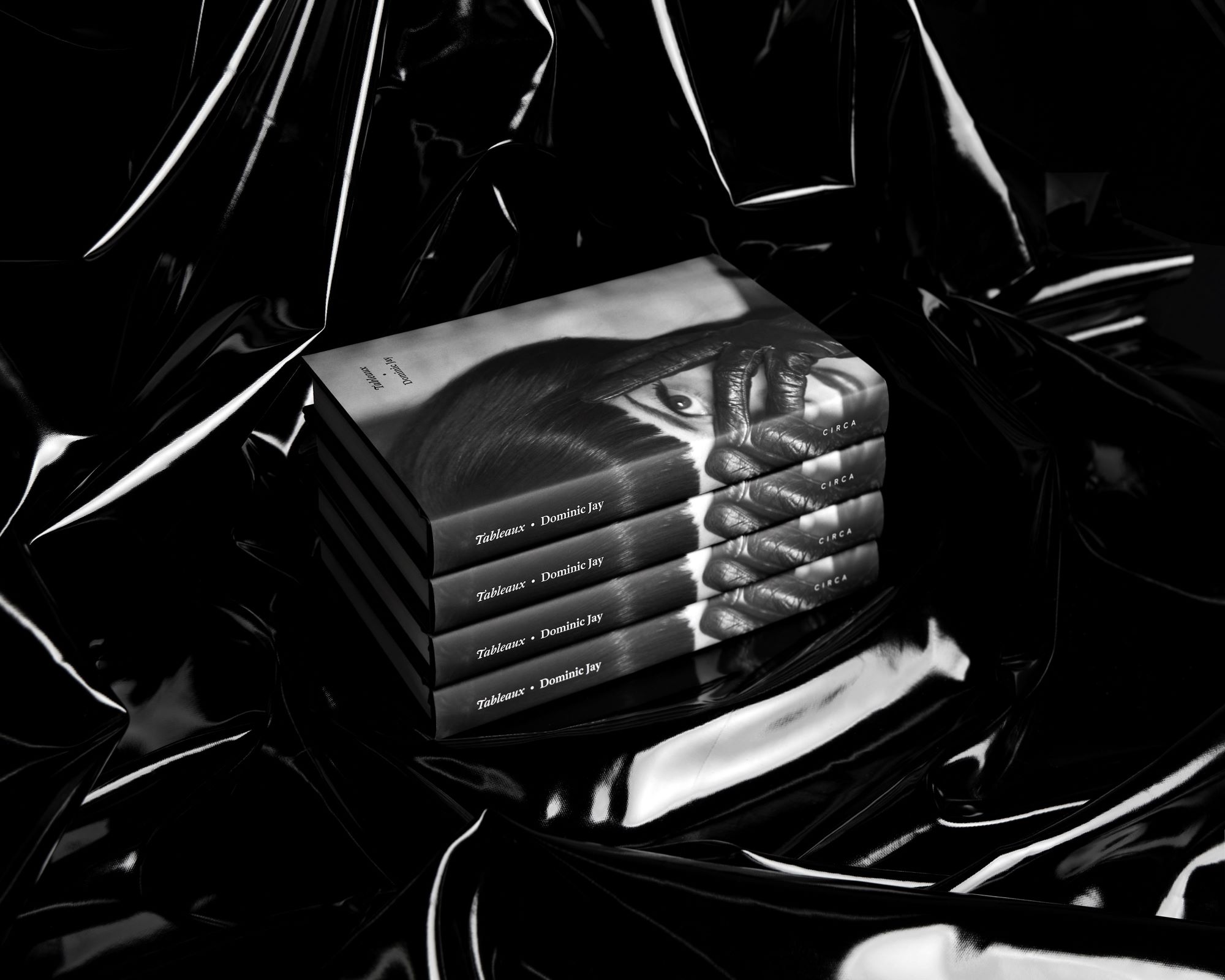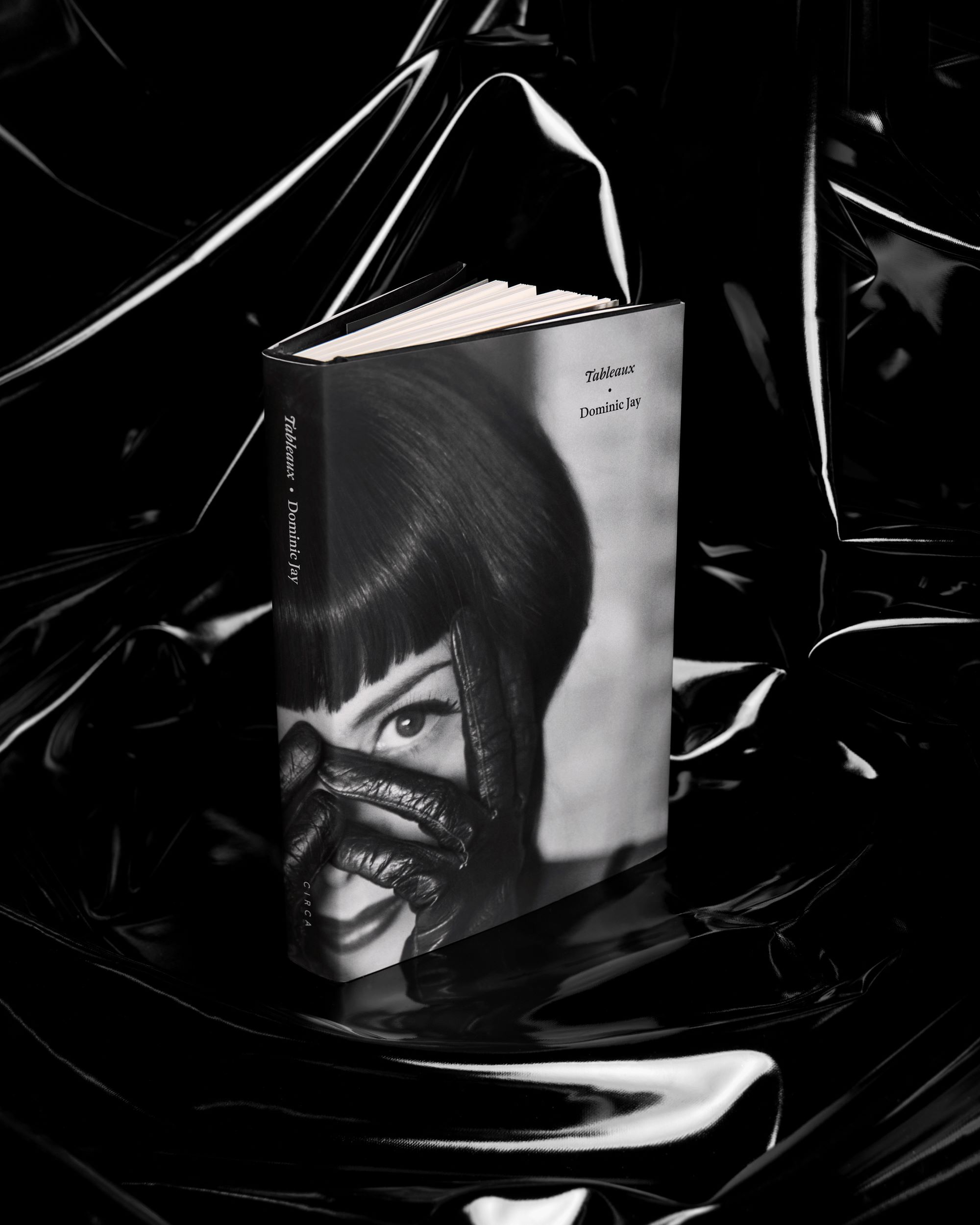I recently came into contact with the writer Dominic Jay. His book “Tableaux” is set in London, and provides an image of London in the 1980s, where the fetish scene forms the background. For those who experienced the London scene at that time, it will undoubtedly be recognizable here and there.
The pictures in the book are by American fetish photographer Steve Diet Goedde; who has been a fine art photographer for over 25 years. He is known for his subtle approach to photographing the high-gloss fetish world in a very non-gloss, down-to-earth style.
The story and the entourage really hit me, because it reminded me of a period, long ago, in Amsterdam, where I, as a young girl wandering through the nightlife, was introduced to fetish and kink and ultimately got hooked on it. It was during one of those typical dark and longing Amsterdam nights that I accidentally became involved in the kink and fetish world when I entered my first kinky (after) party. At the time it could hardly be called a scene already. It was quite an incoherent and confusing world where taboos, passion, desire, ecstasy and pain all came together, but it made me yearn for more. It was a parallel world where everything was in full development, just like me.
Times have changed fate. The underground scene has developed and is unfortunately gone forever.
Although Jay’s book is set in London, it shows many similarities with Amsterdam during the same period. It offers a glimpse of a time when we were still young and pleasantly ignorant. We were constantly discovering and exploring, but a lot just happened unexpectedly. The nightlife, with its extravagant residents, offered a welcome substitute for a home to us: the kids of the city. However, we may have been young and ignorant, at the same time we were pioneers. Even though we didn’t realize this until years later.
The fetish nightlife seemed like a dream, a refuge and a gathering place for all kinds of (desperate) characters. It seemed to provide a safe shelter for those who wanted to hide from the daylight with all its demands and expectations, and that is at least something that will never change. Jay’s story is down to earth, it’s not glamorous or pretentious, it offers a sometimes somewhat cynical view of the times, and it is surprisingly down to earth but is also moving and slightly provocative. It’s a personal story. And if you have some voyeuristic tendencies; you should read it.
Here’s the conversation that I had with Dominic Jay; writer of “Tableaux”.
Hi Dominic, can you introduce yourself to the readers?
I am Dominic Jay, or rather I am not. Dominic is a nom de plume, but he is also a very real presence. Tableaux is Dominic’s story – up to a point. It is also the story of others like Dominic, who explored the fetish and BDSM scenes in London and New York in the 1980s.
I’ve been a professional arts journalist for many years, but this is my first novel. Like Oliver Woolf, the main protagonist in Tableaux, I’ve written about art and architecture for magazines and national newspapers. If you like, journalism is my day job – my public persona. Dominic the novelist is very much a night bird and reflects my private persona. The book was mostly written in the small hours, and it’s no coincidence that much of the story takes place after dark.
Can you tell us how and why your book: Tableaux came about?
I wanted to write about the fetish scene as I knew it in the 1980s. Not a fetish novel exactly, but a roman à clef in which the fetish scene forms the backdrop. Tableaux is part detective story, part rite of passage, part comedy, part tragedy. It mixes real events and real people with fictional scenes and characters. I wanted to show how powerful a magnet the scene can be for some people. But I also wanted to demystify it and to show those people as sympathetic, engaging characters. Not weird, but complex. And above all, unafraid of their sexuality.
How did the collaboration with Steve Diet Goedde come about? How did you get together?
Steve and I are friends, and I’ve admired and collected his work for many years. I bought his first book, The Beauty of Fetish when it was first published. It was through Steve’s photography that I began to appreciate how visually beguiling the fetish scene could be. That it wasn’t just about ‘kink’, that there was an aesthetic dimension too. I wanted to celebrate that awakening in the book.
For me, Steve Diet Goedde and Bob Carlos Clarke are the fetish photographers. Others, like Trevor Watson, do ‘kink’. And others, like Helmut Newton, sell candy. But Steve is special. He is witty, he introduces humour to eroticism. He makes latex look irresistible, ‘lickable’. His models are languorous, never posed. There’s an informality in his work, which is very engaging. The models are his friends, and I think that shows. I always get the sense that they might step out of the photograph and nip out for a cigarette at any minute.
Can you say something about the power of his photos in the book?
Well, I think the cover makes the book. It’s a portrait of Midori, who must be one of the most important characters in the fetish/BDSM scene. Midori is a sexual philosopher and social catalyst, and in that sense, she is the ideal ‘face’ for the book. That photograph is also one of Steve’s iconic images.
Is the book autobiographical? How personal is the book?
Tableaux is most definitely autobiographical. It is also biographical. This is a true story. But it is a story that has been assembled from many sources. If you like, it’s a puzzle made from many different pictures. A composite portrait.
How sexually liberated are you?
More liberated than I was forty years ago. Less liberated than I will be tomorrow.
Are you involved in the BDSM/kink scene on a personal level? Or maybe you were?
I have been an observer for far longer than I’ve been an active participant. In that sense, I’m a voyeur. All writers are voyeurs.
Do you consider yourself a fetishist? Can you explain that?
I am wary of the term ‘fetishist’. Not because it doesn’t fit, but because it’s the wrong pigeonhole. Most of all I consider myself an observer, a chronicler. To do that successfully it helps if you’re on the same wavelength as the people you’re observing. And I am.
What are the differences between the period in which the story takes place and the present?
It’s a completely different world. In the 1980s the scene was still mostly underground. It was a small, tight-knit community. London clubs like Maitresse and Skin Two were relatively small and intimate. There was camaraderie. You knew most of the people; you were among friends. Now there are mega-clubs, like Torture Garden, where you might as well be on a railway station. The scene has opened, which I suppose is a good thing. But for me, it’s lost some of its mystery and its magic.
Is there a message in the book, is it socially critical? Is the book useful as a contribution to awareness and sexual liberation?
I would say there are messages, plural and mixed. There is an overarching message, if you like, which is ‘try it’. And there’s another cautionary message. But I can’t say what that is without spoiling the story for those who haven’t read the book. It’s not a moral tale, though. It’s happily amoral.
What is the climate regarding LGBTIQ+ sexual freedom and personal freedom in your area and the country where you live?
I live in London, so the climate is as benign as it gets. There’s no other city in the world I would rather live in. England, on the other hand, the country beyond London’s borders, is a very different story.
What makes the book unique? Why should we read it?
Tableaux isn’t the first fetish novel, but it’s the first one to portray the scene as it is. It’s a million miles away from a fantasy piece like Fifty Shades of Grey. If you were there in the 1980s, you’d recognize the clubs and many of the people. The book takes you behind the scenes. It piques your interest. It arouses. It also breaks your heart. It’s a slice of real life, served hot and cold.
Is the book suitable for a broader readership, or is it intended for people familiar with the scene?
I would say that it’s suitable for all enquiring adults. Some might find parts of the book disturbing. And so, they should. Others will recognize themselves in it, to a lesser or greater degree. I hope everyone will gain something from reading it.
Go Follow them:
https://circa.press/books/fiction-photography/tableaux/dominic-jay






